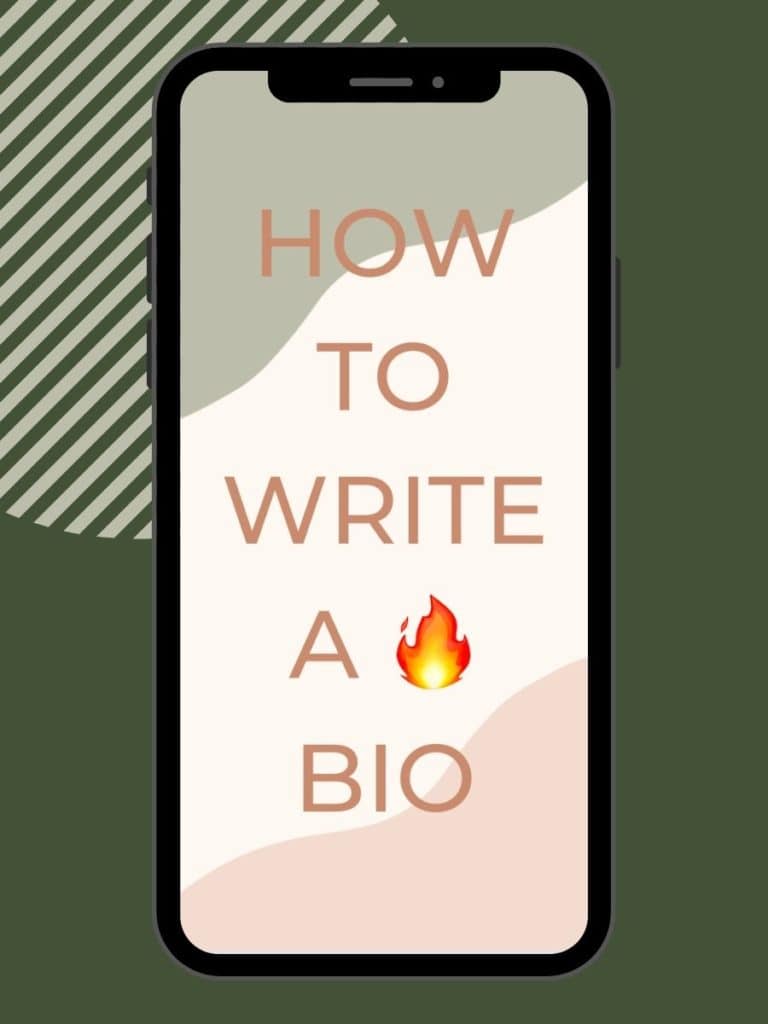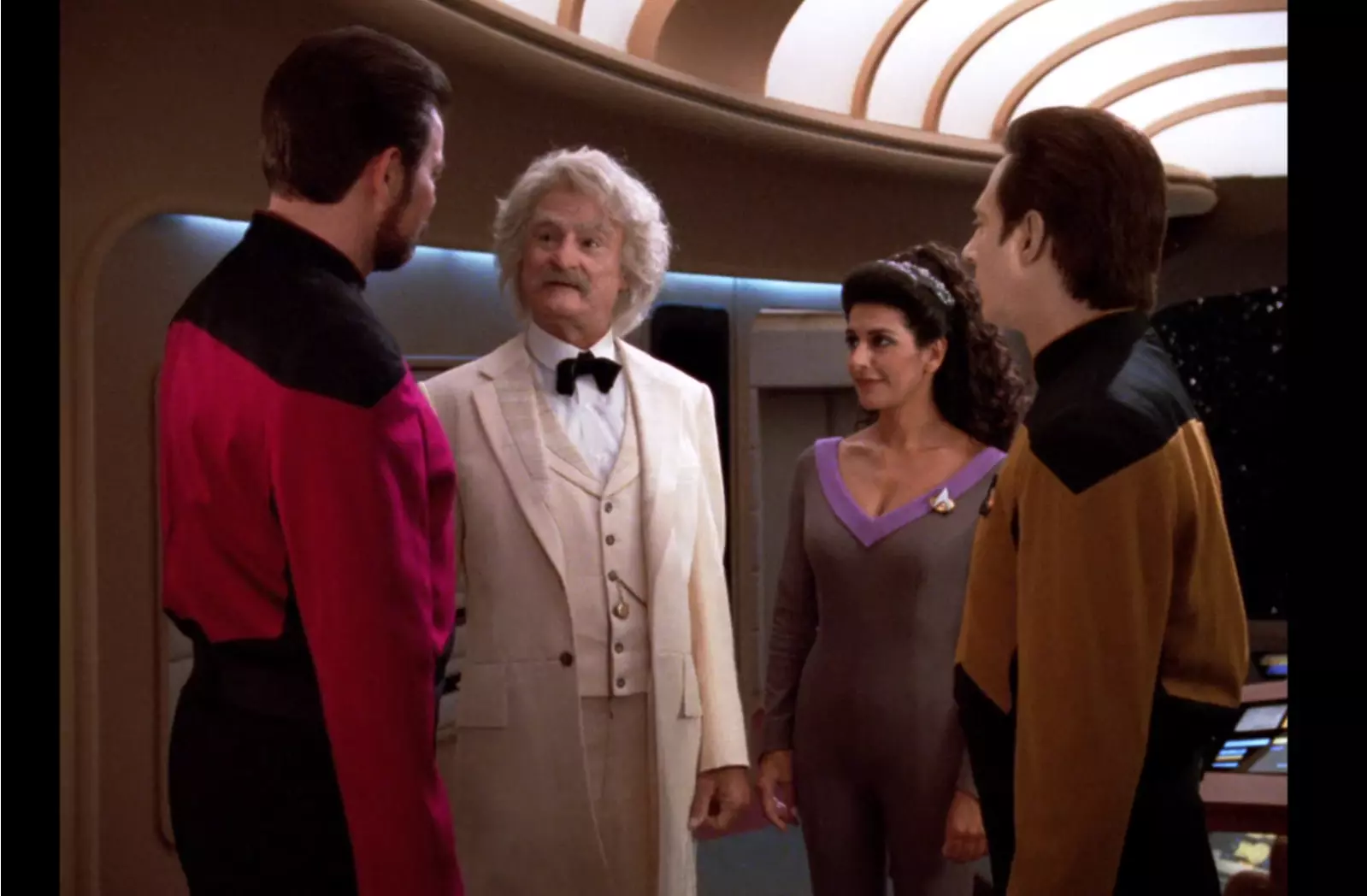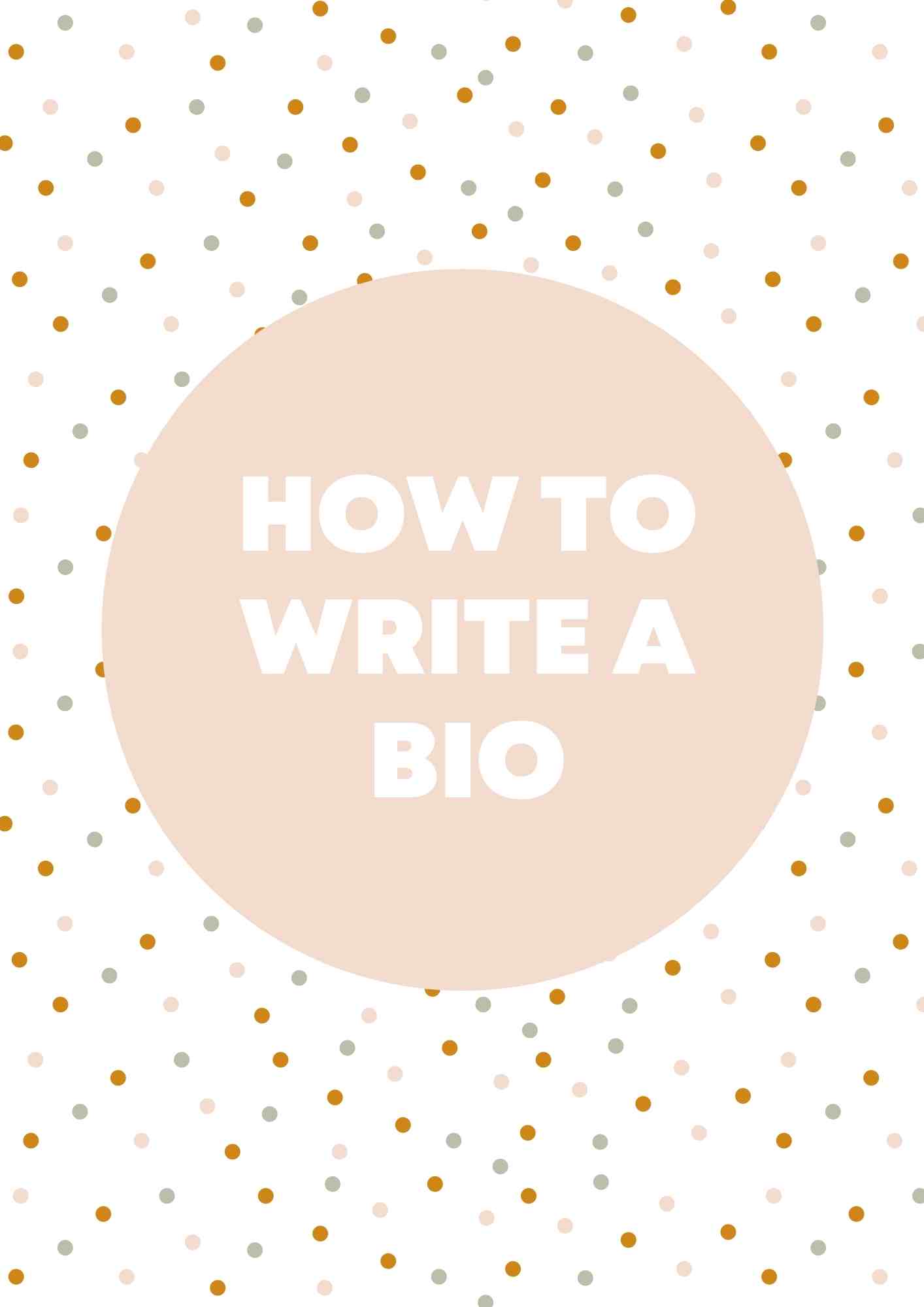How To Write A Bio
I just love talking about myself.
-No one, ever
I get it, no one enjoys talking about themselves. So how do so many folks come up with slick, engaging bios that walk the line between bragging and humility, talking so effortlessly about their achievements, establishing themselves as an authority without seeming… well, pompous?

1. Think of your bio as a conversation, not a lecture.
The trick is that your bio isn’t just about you, it’s about the relationship with your audience. Think of your bio as the beginning of a conversation, and not the beginning of a lecture. True, you’re introducing yourself, but hopefully, you don’t plan to be the only one talking.
2. Don’t overcomplicate things.
So, how do you start that conversation? Let’s talk about some basics first.
There is no “perfect” length. That will depend on what you’re writing your bio for. You want to be clear and honest in your introduction, but leave some room in the conversation. A few short paragraphs should be plenty for most situations — conference bio, podcast guest intro, social media profile.
If you want to lay out more of your personal history and achievements, your website’s “About Me” page can lay things out in more detail. When in doubt, make sure that every sentence in your bio delivers new, substantive information. Avoid repetition and vague wording.
3. Consider your point of view.
A good rule of thumb is that if you’re writing for something you manage — your social media accounts, your website, a conference you organized — then write in the first person.
If you’re writing for something you don’t manage — a podcast where you’re a guest, a conference you didn’t organize, someone else’s magazine — write in the third person.
Now that we’ve got the logistics of length and point of view, let’s get some kindling for your fire bio.
4. Get down to business.
It can feel a little embarrassing to write about yourself if no one’s asking. That’s why I’m gonna just go ahead and ask!
- Why do you love to do what you do?
- How long have you been doing what you do?
- What’s your proudest achievement?
- What would people say that you’re an expert in?
- How did you get from where you began in your career to where you are now?
- What is your biggest goal for the next five years?
- What is something about you that is different from everyone else in your field?
- Where can folks learn more about you? Both resources you manage (like your website) and resources you don’t manage (like places you’ve been interviewed).
- What do you do for fun?
- Who are you when you’re not at work? An artist? A parent? A hiker?
Write down your answers to those questions; that should give you some talking points.
5. Gather Outside Insights.
If you’re stuck, look to your reviews or testimonials.
If you don’t have any, now’s a great time to solicit some. Reviews and testimonials are great to have on your website anyway, and they can provide excellent inspiration for writing your bio. Sometimes it’s hard to know how to describe yourself, especially when you’re writing in the third person. You may feel uncomfortable describing yourself as “warm and friendly,” but if someone else says it, there’s no harm in believing them!
If you’re going to request a review from a customer/client/partner, pair it with a genuine check-in. If you remind them of your previous work, it can inspire a better testimonial. “I hope you found a perfect place in your home for those prints you ordered,” or “I’ve loved watching your new site climb the Google rankings over the last year” are great personalized openers.
In an era when everyone gets so much spam, letting folks know that you are writing directly to them makes them more likely to respond, and respond positively. Then you can ask if they’d be willing to write you a short testimonial about your work together.
6. Construct your bio.
Now that you’ve got kindling for your fire and you’re ready to start a conversation, and now that my metaphors are sufficiently mixed, how do you put it all together?
As the fictionalized version of Mark Twain says in the Star Trek episode “Time’s Arrow” (long story) “No one is more qualified to tell your story than you are.”

I’ve given you some tips on point of view (first for your stuff, third for other people’s stuff), on length (a few short paragraphs, avoiding repetition and vagueness), and on the ultimate goal (starting a conversation, not a lecture) and some tips on getting the raw material to tell your story, but only you know how best to introduce yourself.
Still stuck?
OK, here are a couple of final tips.
Imagine you’re speaking to just one person.
If you’re going to address your audience in your first-person bio, always speak to a singular person and not a group. Anyone can see that your bio is visible to lots of people, but speaking to one person is always more persuasive and compelling than addressing a crowd. “Hey, friend” is more interesting than “Hey, everyone!”
Picture an hourglass.
Try building an hourglass with your bio. Start with the biggest, most important stuff (your career, professional achievements) then do the small personal stuff (hobbies, personal life) in the middle, then finish with more big professional resources and the ever-important call to action.
Here’s a rough idea of the hourglass format:
Hey there! I’m Leah. I’m a digital marketer, SEO specialist and branding consultant. I’d love to help you reach your audience and market yourself through SEO-optimized copywriting and branding photography.
I grew up wild and free in the Blue Ridge Mountains, and I’ve always had a taste for the outdoors and doing things my own way. In my free time I love hiking, bird watching, and traveling to find good coffee.
If you’d like to hear more about the work I do, you can find me on the Brands That Book podcast here. Then head on over to my website to see examples of my work and connect about how I can help you build your brand!
Why the hourglass format?
You start with the most important info first, that way if someone doesn’t finish your bio, they get the big stuff first. Sprinkle in the personal stuff in the middle so that people realize that you’re a human being, then bring it back to business with a call to action.
Give it a try!
As much as I love the internet, sometimes things like this are just easier with a pen and paper. That’s why I made this super cute downloadable to help guide you through the process of writing your own 🔥 bio.
Print this out and follow along with this “How To Write a Bio” blog post for the best results.

Get help when you need it.
I’ll be the first to say that you absolutely can write your own bio, but I also recognize that if you’re just drowning in impostor syndrome or can’t make it sound quite right, it may be worth it to call in the pros! Having a copywriter construct a bio for you is a pretty simple project that can save you tons of time, especially if you have them write a couple of different versions at once that you can use for different applications, like a social media bio, a guest bio (for guest blogging and podcast appearances), and a long-form website bio.
Once you have the basic structure written, it’s pretty simple to swap out facts and tidbits to keep it up-to-date and interesting, without having to reinvent the wheel!

